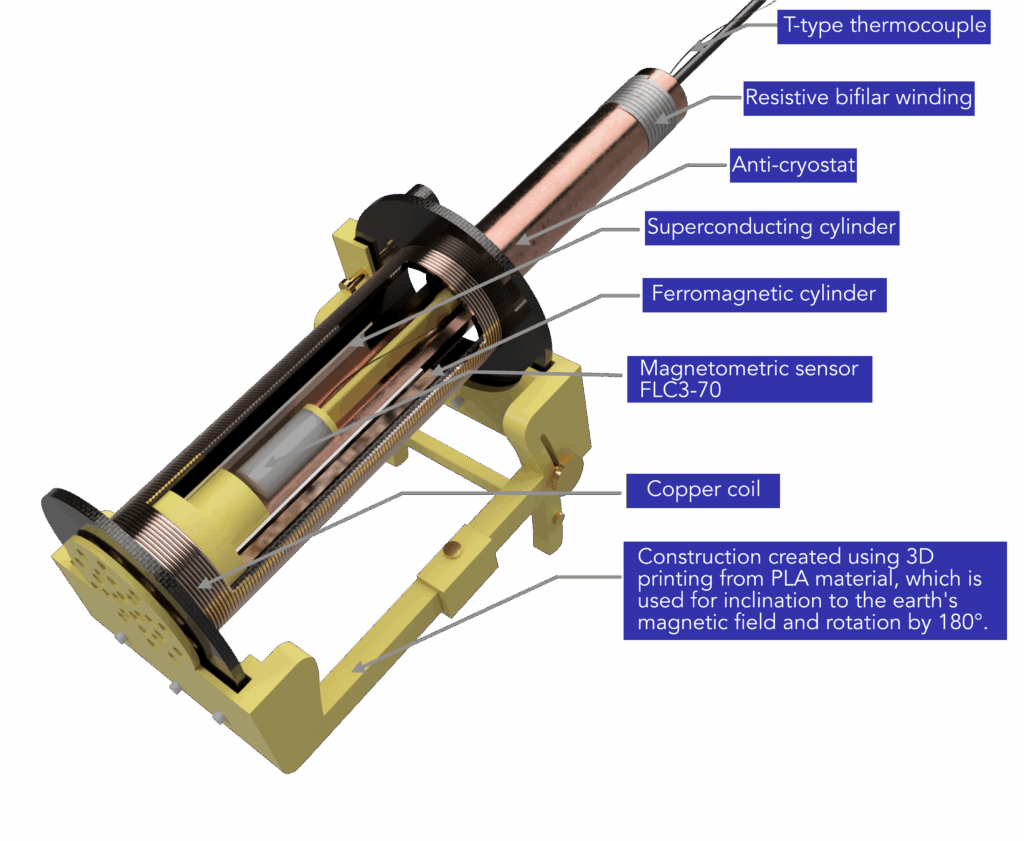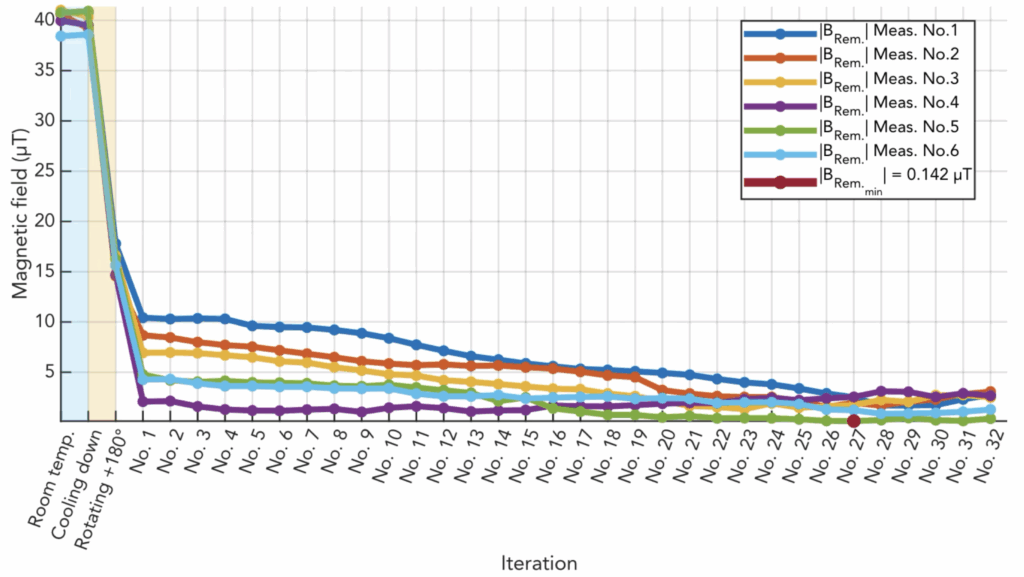Magnetic shielding is an integral part of many devices in industrial, medical or research sector. The most common shielding method is passive shielding, however using a superconducting and ferromagnetic material we can obtain much better results. The disadvantage of such magnetic cloak is unfortunately the need to cool it down to cryogenic temperatures (in this case 90 K and lower) to obtain superconductivity, which limits its usage. However, in devices where that is not a problem, can magnetic cloak, without affecting the outer magnetic field, construct more precise measurement systems or investigate what happens to biological cells when no magnetic fields is present. Precisely reaching zero magnetic field was the goal of Martin Kucharovič and his colleagues and their focus was on creating magnetic cloak that would suppress magnetic field of Earth to zero, simulating for example conditions in outer space. The superconducting part of the magnetic cloak is made from (Rare Earth Barium Copper Oxide) tape and the ferromagnetic part is from Li0.575Zn0.4Ti0.55Fe1.475O4 ferrite powder mixed with epoxy with concentration of 31.2%. During the measurements, after the cooldown of superconducting layer, unwanted magnetic field can be trapped because this trapped field can affect the performance of the magnetic cloak and interfere with the ability of the cloak to reach zero magnetic field in its volume. To remove this trapped field demagnetization process using dynamic magnetoresistance was used.

The effect of dynamic magnetoresistance involves applying an alternating magnetic field to the superconductor. However, this field must be oriented transversely to the superconductor. This process leads to the induction of currents that act oppositely to the trapped magnetic field, gradually reducing the residual magnetic field in the cloak. Additionally, we also rotated the cloak by 180° around its longitudinal axis to ensure that the external magnetic field (e.g., Earth’s magnetic field) and the trapped field have opposite directions, leading to further reduction of magnetization (Fig. 1). Experimental results show that by optimizing parameters such as the amplitude of the demagnetizing field, frequency, and exposure time, it is possible to achieve a significant reduction of the residual magnetic field inside the cloak. The lowest achieved value of the residual magnetic field was 0.14 µT, representing a significant decrease compared to the original values before demagnetization. On average, we observed a decrease in the trapped magnetic field by 95% (Fig. 2).

Authors: Martin Kucharovič, Fedor Gömöry and Mykola Solovyov





